Just Right Carbine, .45 ACP Edition
Oleg Volk 10.09.13

I first tried JRC carbines two years ago. The main attraction was the ability to switch controls and the ejection direction from right to left (I have a lot of left-handed friends). A magazine wanted to publish a review of the .45 ACP variant, but the maker sent 9mm version because the .45 wasn’t fully debugged yet.
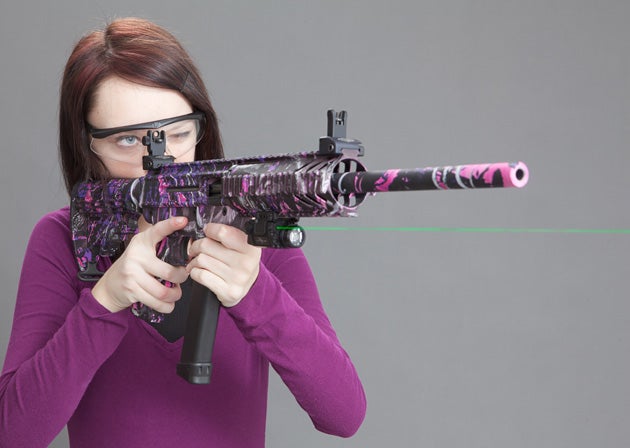
After two years of playing with the 9mm variant, I have the following observations:
THE GOOD:
- Very little recoil
- Reliable with a wide range of ammunition (+P not recommended, but longer barrel gives 20-25% velocity increase with standard pressure ammo)
- Very accurate — 2.5″ at 100 yards with ball, 2″ with hollow points. Free floated barrel helps in this.
- Charging handle and ejection direction can be switched right to left
- Takes Glock magazines from 10 to 100 rounds
- Stocks, forends, grips, trigger pack interchange with AR-15
- Variable length of pull
- Can sustain fire for a while without overheating
- Threaded muzzle on newer rifles
- Lightweight
- Can be converted to other calibers
THE BAD:
- Charging handle is aggressively textured and too small for my hand. This is easily fixed with tape or epoxy.
- Disassembly for cleaning or ejection side conversion requires tools and time. Fortunately, I’ve only had to clean it once every 2000 rounds or so.
- Magazine ejection button on the wrong side for right-handed users, and not fenced against accidental activation. I’ve not dropped magazines by accident yet, but it bothered me in theory.
The article finally got published… just as the .45 ACP version became available. The main problem of the original .45 ACP variant was fast cycling and sometimes bolt bounce from an insufficiently stiff recoil spring. Heavy cartridges, especially when fed from extended magazines, wouldn’t come up to the breechface quickly enough, and the bolt would hit them from the side, crushing the brass. The issue was solved by extending the buffer tube by about 1.5″ to slow the cycling and provide more time for the magazine to feed.
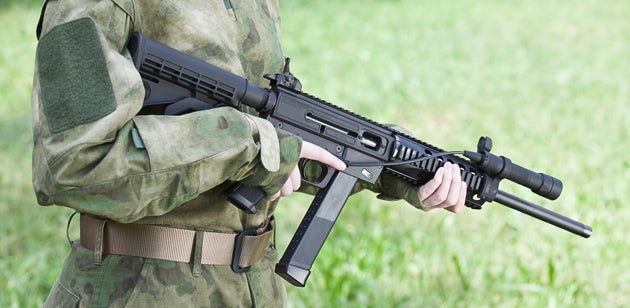
The carbine looks and feels the same as the 9mm. The bolt spring is slightly heavier, but that’s the only obvious difference.
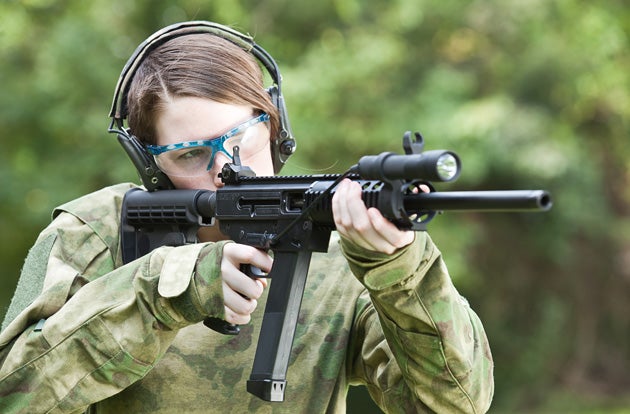
.45 ACP gains about 15%-20% velocity from 16″ barrel over 4.6″. The main improvements from going to a carbine are greatly reduced muzzle blast and flash, and improved accuracy. 4″ at 100 yards is possible with iron sights, and 3″ with an optic.
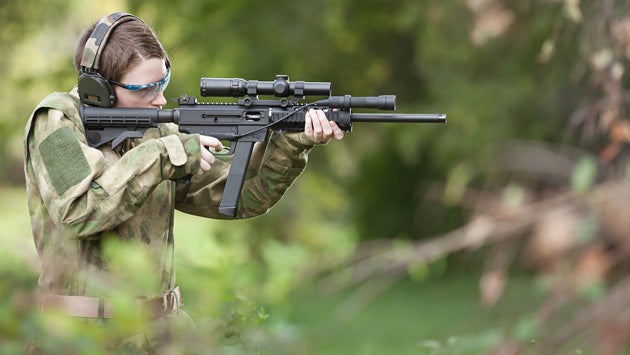
Compared to classic .45 ACP submachine guns, modern carbines give up cyclical rate of fire but gain greatly in actual effectiveness. Ringing 6-inch steel gong at a hundred yards would be tough with an open bolt Thompson, but it’s a cakewalk with the JRC.
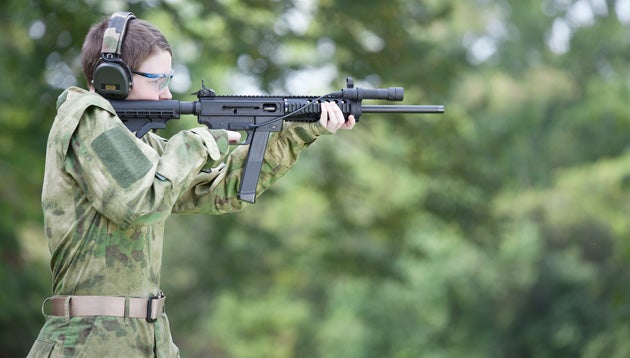
In practice, this design is a great companion to a Glock or a 1911 (the magazine well is also modular). It extends practical range of the pistol cartridge out to 125-150 yards. Threaded muzzle can be used for mounting a sound suppressor. It has little need of either a compensator or a flash hider, as muzzle flash is minimal and rise on firing almost zero thanks to the straight stock configuration. Even unsuppressed, it is far less concussive than a true rifle.